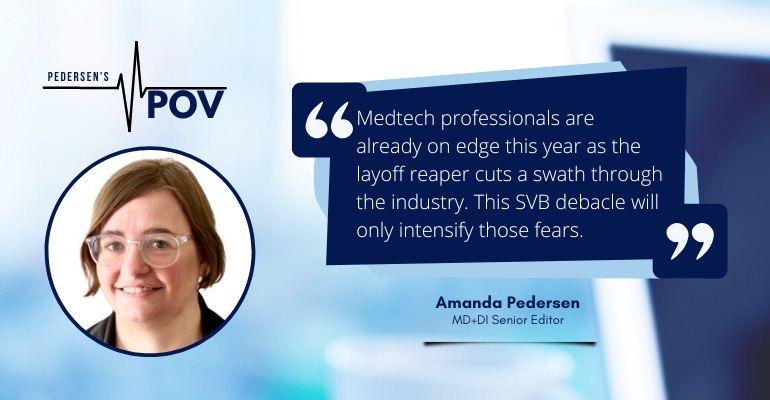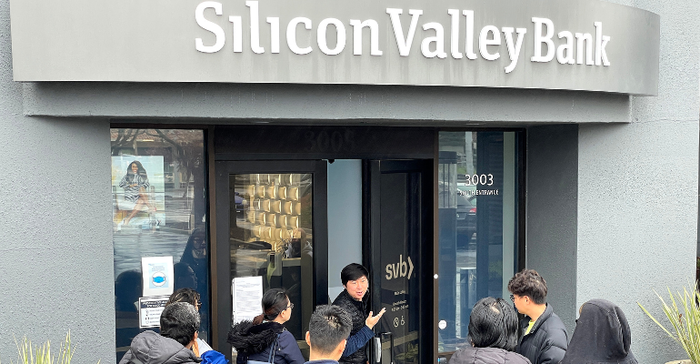This week in Pedersen's POV, our senior editor ponders what the Silicon Valley Bank collapse could mean for medtech.
March 13, 2023

The Silicon Valley Bank collapse lived rent free in my brain for most of the weekend – and I’m sure I’m not alone in that feeling. Like many people, I feared the bank’s rapid demise signaled a financial meltdown like we witnessed in 2008.
At first, I was reassured by financial gurus who calmly explained that the banking industry is much more stable today compared to 15 years ago. Back then, banks were taking excessive risks, Wells Fargo’s Mike Mayo told CNN. Most banks today are a lot more diversified than Silicon Valley Bank, other experts said, explaining that SVB was in trouble because of its exposure to “particular industries.”
So, there’s really no need to freak out — unless you’re, say, a medtech startup.
Cue the 2008 flashbacks. On a personal level, I’ll always remember that year first and foremost as the year I became a mother. But I also remember what a turbulent time it was for the industry, and how quickly early-stage medtech funding dried up. VC firms simply couldn’t afford to gamble on startups that could take years to pay off. With such a vital lifeline cut off, academic-level innovation stalled. It didn’t help matters that the medical device excise tax dumped salt into the industry’s wounds not long after.
So, between the Great Recession and the now-dead medical device excise tax, by 2013 a lot of medtech professionals had become layoff victims. Medtronic, Boston Scientific, and Abbott Vascular reported sizable workforce reductions that year. Sound familiar?
Medtech professionals are already on edge this year as the layoff reaper cuts a swath through the industry. This SVB debacle will only intensify those fears.
So, how did things at Silicon Valley Bank get so bad so quickly? First, SVB put too many eggs into one basket. But the real blunder was in the messaging. The bank issued a rather complex press release about stock sales and other measures intended to shore up the bank’s balance sheet. That might not have been so bad if it hadn’t coincided with news of another bank failure (Silvergate, a primary bank for crypto companies).
Then the CEO asked customers via Zoom not to panic — because isn’t that what everyone wants to hear from their bank? So, naturally, people freaked out even more than they already had been and there was a run on the bank.

A lot of media attention since Friday afternoon has centered around the companies that deposited cash with SVB and the police response as panicked tech founders showed up at the bank’s various branches hoping to pull their money out. Banking regulators said Sunday evening that depositors at Silicon Valley Bank would have access to their funds Monday. That assuaged at least some of the fears across rippling through the tech world. But there are still a lot of questions that await answers.
For instance, what about companies like AtriCure, ViewRay, and SiBone that relied on SVB for revolving credit? Or companies like Treace Medical Concepts that used Silicon Valley Bank credit cards? As this Vox explainer points out, there could also be near-term disruption for companies that didn’t use SVB, but have vendors that did.
Several medtech analysts churned out lists over the weekend of medtech companies with exposure to Silicon Valley Bank. Companies like iRhythm Technologies, which held $54.5 million in holdings at SVB, in addition to an outstanding $35 million term loan. That gives us a starting point for estimating how deeply the SVB fallout will be felt in medtech. Maybe this is pessimistic of me, but I’m betting there will be ripple effects throughout the industry for quite some time.
About the Author(s)
You May Also Like




